Elliptical or rower? Both machines have a ton of fat-burning and weight-loss benefits. But which one will be most effective for you and your goals? Learn about the pros, cons, and similarities of these cardio machines.
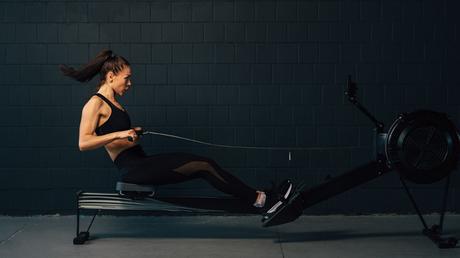 Elliptical Machine vs Rowing Machine:
Elliptical Machine vs Rowing Machine:- Calories Burned
- Weight Loss
- HIIT Workouts
- Building Cardio
- Muscles Worked
- Functional Fitness
- Mobility and Joint Impact
Wondering whether the elliptical or rowing machine packs a bigger punch when it comes to losing weight and getting in shape?
Look no further.
In this detailed guide, we are going to break down both machines and compare them by muscles worked, calories burned, weight loss, interval training, and much more.
By the end, you will have a clear idea of which machine is going to give you the workouts and results you are after.
Let’s get right to it.
Elliptical vs Rower – Calories Burned
For most trainees, the main goal with working out is shredding a metric ton of calories, and as a result, this is often the primary barometer of a successful workout.
Calories burned is not the be-all-and-end-all metric to consider, but it’s definitely a good starting place.
After all, the more calories you burn, the more energy you expend, and thus the more energy you compel your body to produce.
In the long run, higher caloric expenditure is one of the most crucial components of not just weight loss, but fat loss specifically.
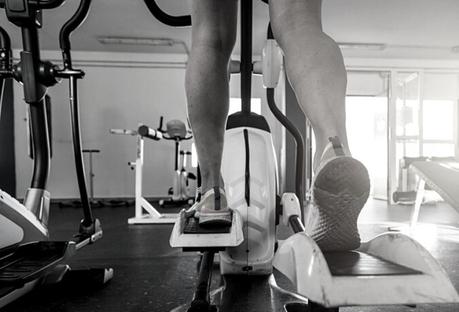
Let’s start off by looking at the calories burned on the elliptical machine.
According to Harvard Medical School1, in a 30-minute elliptical training session, a 185-pound person will burn 378 calories on the elliptical machine.
Not bad, right?
With a “moderate” rowing machine workout, that same 185-pound person will burn 294 calories.
However, step up the pace to “vigorous”, and the calorie expenditure increases to 440 calories. The rowing machine looks like it can burn more calories, right?
Well, bear in mind that the Harvard research only utilized a “general” workout on the elliptical machine to calculate the calorie expenditure.
Given the difference between the moderate and vigorous rowing workouts, it stands to reason that a vigorous elliptical machine workout would also burn a lot more calories.
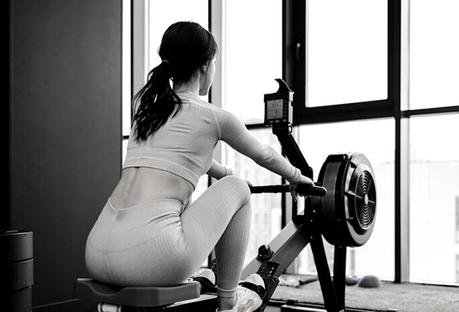
Ultimately, based on the data available, though it appears the rowing machine workout burns more calories, I firmly believe the calorie expenditure of both workouts is roughly equivalent.
The slight edge goes to the elliptical trainer because it works more muscles (see the “Muscles Worked” section below), which in turn increases the energy demand placed on the body.
Elliptical vs Rower – Weight Loss
The elliptical machine is one of the best cardio machines for weight loss for a number of reasons:
- It burns a lot of calories
- It encourages an “aerobic” state where your body can burn oxygen and fat-based energy as well as sugar-based energy
- It works your entire body in synchronicity
- It’s a steady-state workout, but makes it easy to increase the intensity in order to do HIIT training
The rowing machine also offers all the same benefits, but with one slight exception: it doesn’t quite work as many muscles (see the “Muscles Worked” section below).
Because of that, the elliptical will burn more calories than the rowing machine, which in turn encourages more weight loss and better strength-building.
(For more on how to use the elliptical machine for weight loss, read this article.)
Elliptical vs Rower – HIIT Workouts
I’m a huge proponent of HIIT workouts. They are short, sweet, and get right to the point (plus they continue to burn calories long after the workout is done.)
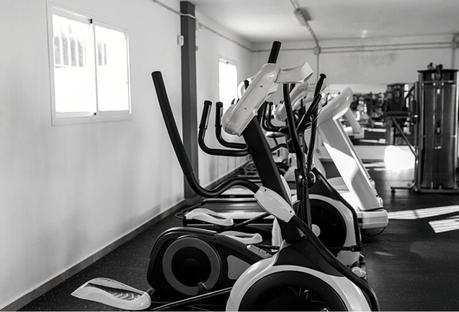
Increasing the intensity of your training will encourage better cardiovascular conditioning, increase muscular strength, and burn significantly more calories.
That’s why I’ve made such a point of writing about HIIT workouts in my elliptical trainer HIIT workout article.
Thanks to its design, the elliptical is probably one of the top three HIIT machines in the gym. It’s low-impact, user-friendly, and works your entire body.
The rowing machine, however, is also one of the top three (the third being the treadmill).
Really, all you have to do to increase the intensity of your session is to row faster/pull harder. Even just increasing your speed is enough to push your body to its absolute limits.
At the end of the day, both machines are equally useful for your HIIT workouts, and will both lead to amazing results.
Elliptical vs Rower – Building Cardio
One of the great benefits of the elliptical trainer is that they engage your cardiovascular system and build cardiovascular endurance.
Because you’re working all of the muscles in your body, your heart will need to pump blood oxygenated by your lungs through all your blood vessels to provide sufficient oxygen and energy.

This leads to increase cardiovascular endurance (higher VO2 Max and MaxHR), and thus strengthens your heart and reduces your risk of heart disease.
Rowing machine workouts are just as effective at improving your cardiovascular conditioning as elliptical machines.
The movement is different, but the outcome is the same: your body is forced to work extra hard to deliver oxygenated blood and energy where it’s needed, strengthening the muscle that is your heart, increasing your lung capacity, and keeping your blood flowing.
At the end of the day, if cardiovascular conditioning is your primary objective, you’ll find both types of workouts deliver similar results.
Elliptical vs Rower – Muscles Worked
If you look at all the muscles worked on the elliptical machine, you’ll find the list is incredibly lengthy.
- Your “push” muscles (chest, triceps, and shoulders) engage when you push on the handles.
- Your “pull” muscles (back, biceps, shoulders, and forearms) engage when you pull on the handles
- Your core (abs, obliques, and spinal erectors) engage to keep you stable and balanced through the twisting movement
- Your legs (quads, glutes, hamstrings, and calves) work together to pedal and support your body weight
Virtually every muscle in your body is engaged during the elliptical training. On top of that, you can change the lower body muscle focus by using the elliptical backward.
If you raise the intensity, it can be a workout that builds both strength and endurance.
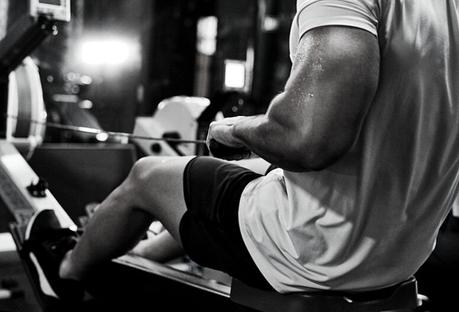
Rowing machine workouts involve a different movement, one that focuses entirely on the PULL without any PUSH engagement.
What this means is that the chest and triceps don’t have any work to do during your rowing workout. All of the focus is on your back, biceps, shoulders, and legs.
Because you’re rowing straight forward and backward, your obliques also aren’t needed as much, so your abs and lower back do most of the work.
Ultimately, rowing machine workouts will recruit fewer muscles than elliptical training.
However, the demand on the muscles worked is fractionally greater.
Your “pull” muscles have to work harder to row the handle toward your chest, your abs and lower back have to engage more to move your upper body through the rowing motion, and your legs drive harder against the pedals to push back through the rowing stroke.
Though fewer muscles are engaged, those engaged end up doing more work than with an elliptical workout.
Elliptical vs Rower – Functional Fitness
Functional fitness refers to any exercise that supports your activities of daily life.
For example, walking, climbing stairs, running, squatting, pulling, pushing, lifting heavy objects, lunging, and other movements that you do every day.
For most of your activities of daily life, the elliptical machine is the more effective option:
- The pedaling motion is similar to walking and running (when sped up).
- Raising the incline on the elliptical trains the same muscles that engage when you climb stairs.
- Squat-walking on the elliptical strengthens the muscles that squat and lunge.
- The push and pull on the elliptical machine are identical to many of the push and pull movements of your daily life.
- The core strength you develop in the specific twisting motion of the elliptical machine will reinforce your spine for similar twisting motions.
However, the rowing machine is definitely the better option for anyone who is training to kayak, canoe, paddleboard, or row.
For example, people who live in perennially warm climates and spend a lot of time engaged in watersports, or those who train hard to enjoy the summer months of paddling.
The movement of the rowing machine will build great muscular and cardiovascular endurance specific to watersports.
Elliptical vs Rower – Mobility and Joint Impact
Last, but definitely not least, I want to focus on which of the two exercises increases mobility, as well as the impact they have on your joints.
With elliptical training, you push your body through “normal” movements (similar to walking and/or pedaling).
As long as you have the correct stride length on the elliptical, the machine will develop good mobility in that range of motion, but only in that range of motion.
To increase joint mobility, you have to adapt the workout in a new way—i.e. walking backward, raising the incline, etc.
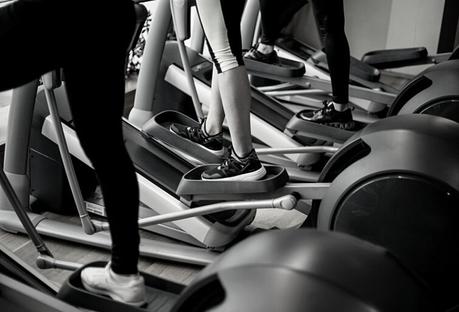
Elliptical training is as close to “no impact” as it gets. Because your feet never lift off the pedals, there is virtually no impact with every step. This makes it much gentler on your knees, ankles, and spine than higher-impact exercises like running.
Rowing is also a “no impact” form of exercise, with your feet remaining planted on the pedals throughout the rowing motion.
However, because you have to lean forward and backward, there is a greater risk of lower back fatigue, strain, and even injuries.
Rowing is not a good option for anyone currently recovering from back pain or surgery, at least not until the spine has recovered sufficiently that it’s not at risk of re-injury.
The good thing about rowing vs. elliptical training, though, is that it encourages greater mobility.
The rowing movement pushes you to move through a greater range of motion than you would normally.
It can also help to strengthen your knees, hips, and lower back in a way elliptical training just can’t.
The Bottom Line
At the end of the day, both elliptical workouts and rowing offer a lot of benefits.
Each has its pros and cons, and it’s impossible to decide that one is significantly better than the other.
(Especially as each person has their own distinct workout history, load-bearing demands, etc, etc that will dictate which cardio machine is better suited for them.)
That being said, I do have to give a slight edge to elliptical training.
It’s gentler on the joints, works more muscles, burns more calories and fat, and allows you to do HIIT workouts without increasing the risk of joint injuries.
As someone who’s struggled with knee, hip, and lower back problems over the years, that’s a HUGE point in its favor.
However, my advice is to incorporate both types of exercise into your weekly training program.
That way, you get more great options that offer variety in your workouts and effectively improve your cardio conditioning.
More Elliptical Machine Guides and Articles
Elliptical vs Running: Which One is Best for Your Workout Goals? Wondering whether the elliptical or running is right for you and your goals? We compare the two when it comes to calories burned, building cardio, weight loss, and more.
How Much Do Ellipticals Cost? (44 Different Models Compared). Ellipticals can be a costly investment in your workout goals. Here is a look at how much each type of elliptical costs and how much to spend on one.
